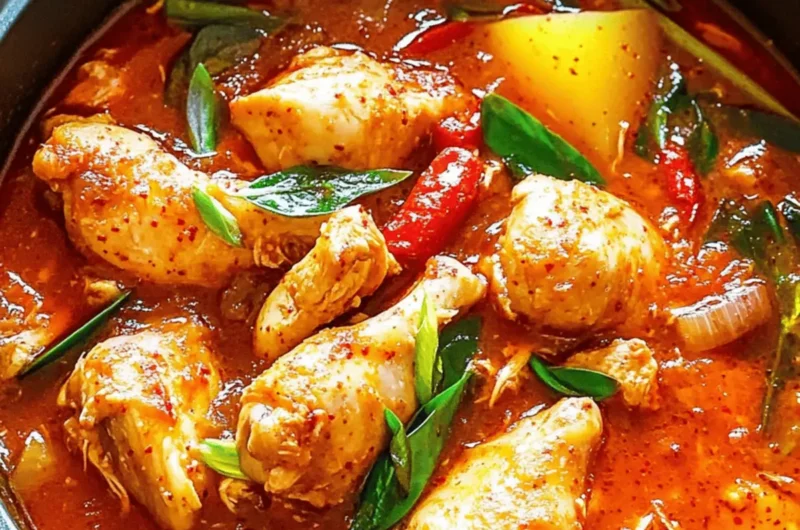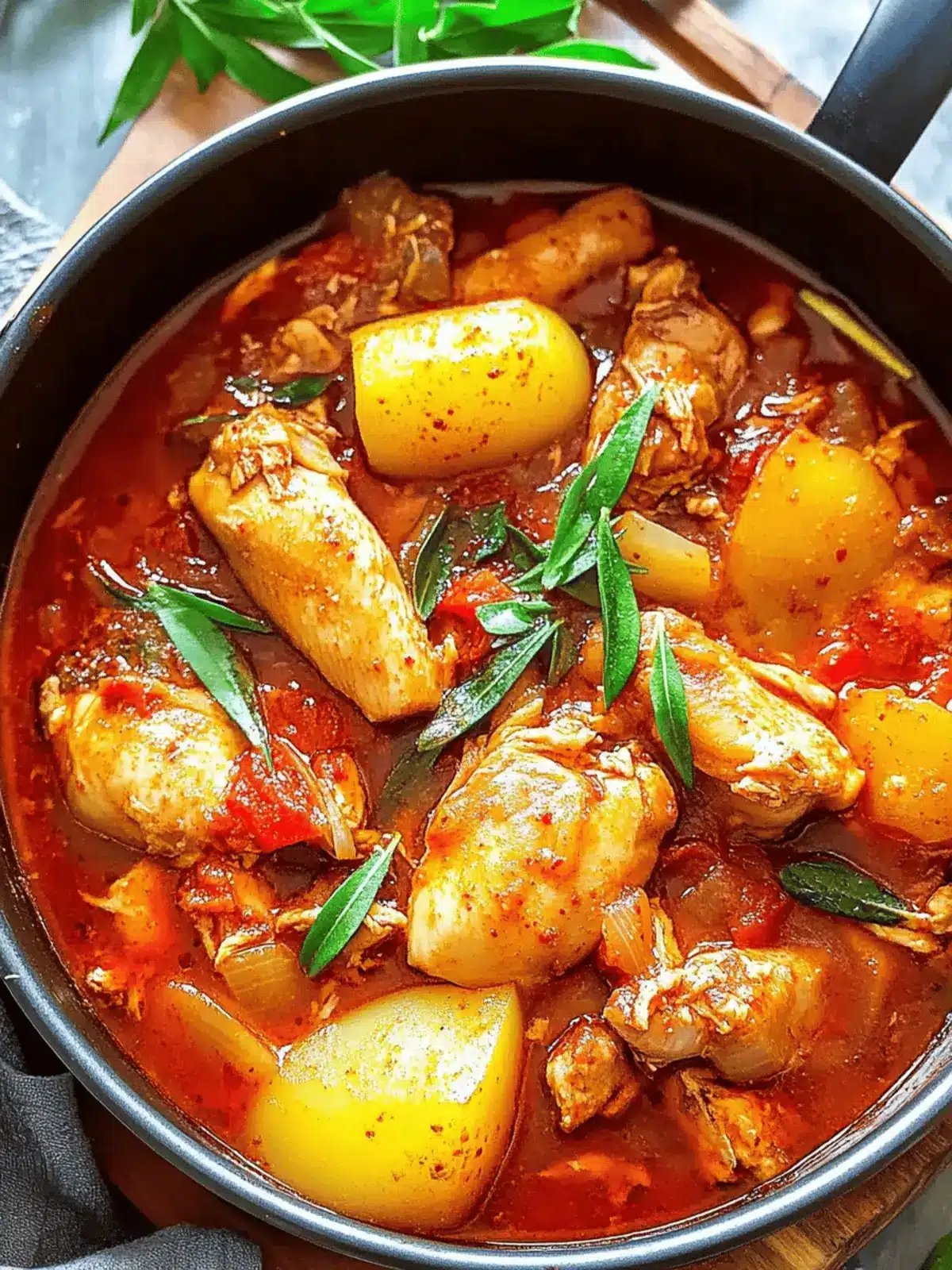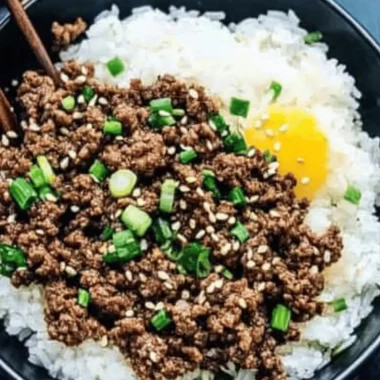There’s a special kind of comfort that comes from a bowl of homemade stew, and Easy Dakdoritang epitomizes that warmth. The moment I first tried this hearty Korean dish, I was captivated by its vibrant colors and rich, spicy aroma wafting through the kitchen. It’s the kind of recipe that brings people together, whether it’s a chilly evening or a cozy family gathering.
As the tender chicken simmers alongside sautéed potatoes and carrots in a savory chili sauce, it’s impossible not to feel a sense of nostalgia for home-cooked meals that remind us of love and togetherness. Even better, this dish is remarkably easy to whip up, making it a perfect solution for busy weeknights or leisurely weekends alike. With just a handful of ingredients, you can elevate your dinner routine and bring a touch of Korea to your table. So, let’s dive into this delightful culinary journey and embrace the comfort of Easy Dakdoritang!
Why love Easy Dakdoritang for dinner?
Simplicity at its Best: This Easy Dakdoritang recipe requires minimal preparation, making it perfect for both busy weeknights and lazy weekends.
Crowd-Pleasing Flavor: With its rich, savory broth and tender chicken, this dish is guaranteed to satisfy even the pickiest eaters.
Hearty and Filling: The addition of potatoes and carrots makes it a complete meal, offering warmth and comfort in every bite.
Versatile Options: Feel free to customize with your choice of protein or extra veggies, allowing you to adapt to dietary preferences seamlessly.
Nostalgic Experience: Bringing a taste of Korean cuisine to your kitchen, it’s the ideal way to share the warmth of home-cooked meals with friends and family.
Easy Dakdoritang Ingredients
• Gather everything you need for this comforting Korean stew!
- For the Stew
- Chicken (2 lb, cut into pieces, bone-in, skin-on) – The star of the dish, ensuring rich flavor and tender texture; you can use boneless chicken breast for a lighter option.
- Onion (1 medium, cut into chunks) – Adds sweetness and depth; yellow or white onions work best for this recipe.
- Potatoes (3 medium, cut into chunks) – Hearty and absorb the stew flavors beautifully; substitute with sweet potatoes for added sweetness.
- Carrot (1/4 medium, cut into chunks) – Brightens up the dish and lends natural sweetness; feel free to use other root vegetables like parsnips.
- Water/Anchovy Stock/Dashi/Rice Water (2 ½ cups) – Forms the base of the stew, enhancing flavor; rice water creates a smoother broth for a delightful finish.
- Green Onion (2 each, chopped) – For garnish and a fresh flavor boost; it beautifully contrasts the richness of the stew.
- Chili Pepper (2 each, chopped) – Provides a kick of heat; adjust based on your spice preference for a perfect balance.
- Gochugaru (2 tbsp, Korean chili flakes) – The primary spice that brings heat and color; can be reduced for a milder easy Dakdoritang.
- Soy Sauce (4 tbsp) – Adds salty umami depth; opt for tamari for a gluten-free alternative.
- Garlic (4 cloves, minced) – Essential for enhancing the overall flavor; don’t skimp on this aromatic!
- Honey or Sugar (1 ½ tbsp) – Balances the spiciness beautifully; maple syrup works as an excellent substitute.
- Gochujang (3 tbsp, Korean chili paste) – Thickens the sauce and deepens the flavor; feel free to adjust to your taste preference.
- Black Pepper (1/4 tsp) – A dash of seasoning for the final touch.
How to Make Easy Dakdoritang
-
Prepare Sauce: In a mixing bowl, combine all the sauce ingredients—soy sauce, gochugaru, gochujang, garlic, honey, and black pepper. Stir until well mixed.
-
Sauté Chicken: Heat a large pot over medium heat, then add chicken pieces and onion. Toss them together with the sauce mixture, cooking for about 2 minutes to infuse the flavors.
-
Add Liquid: Pour in the water or anchovy stock, stirring well to combine. Cover the pot and let it cook for 10 minutes, stirring occasionally, until it begins to bubble.
-
Add Vegetables: Stir in the potatoes and carrots, then reduce the heat to low. Cover the pot again and let it simmer for 20 minutes, ensuring the potatoes are tender when pierced with a fork.
-
Finish & Serve: Remove from heat and stir in chopped green onion and chili pepper for a fresh, vibrant finish. Serve hot over steamed rice for a comforting meal.
Optional: Garnish with additional green onions for a pop of color and flavor.
Exact quantities are listed in the recipe card below.
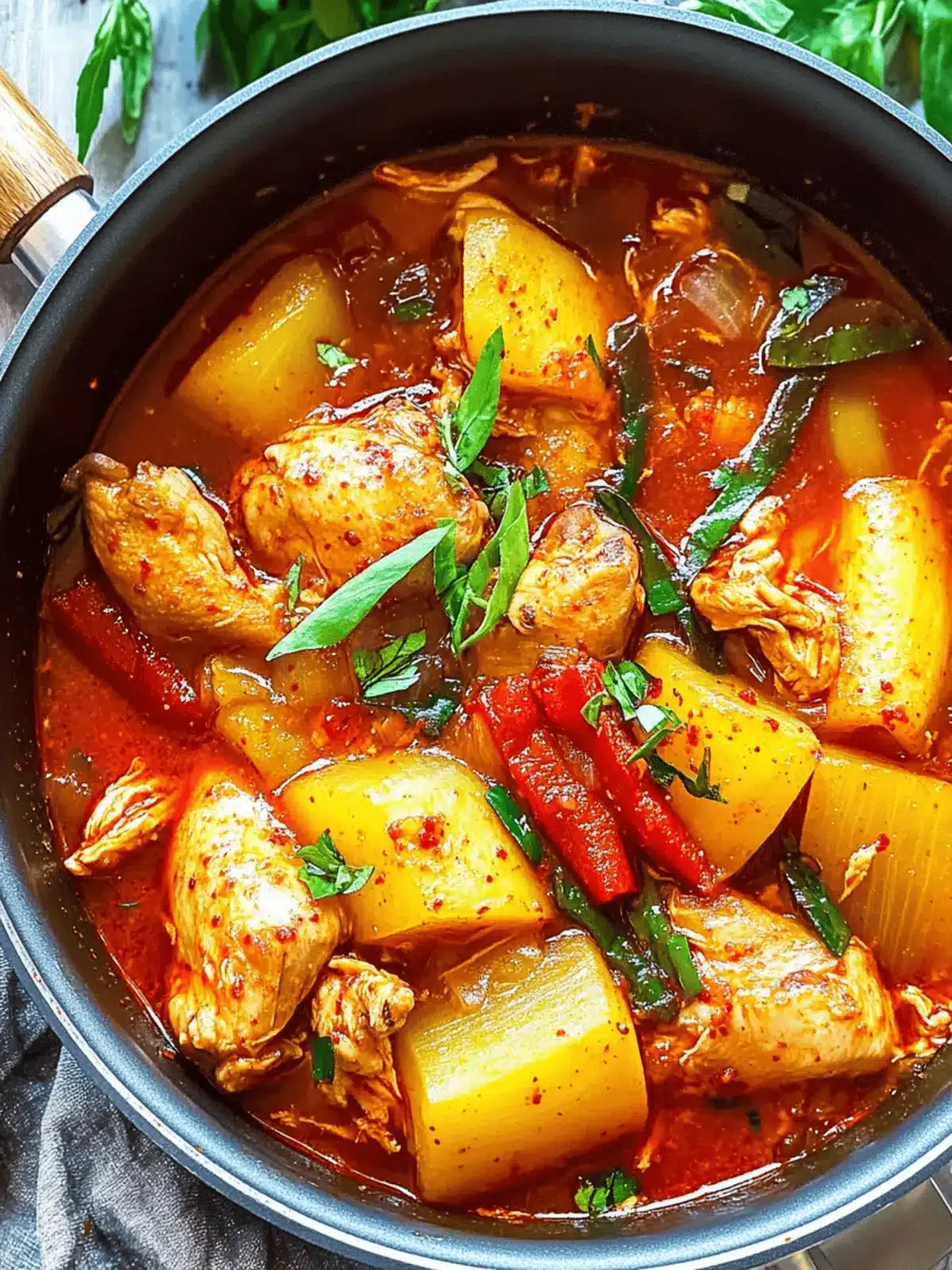
How to Store and Freeze Easy Dakdoritang
- Fridge: Store leftover Easy Dakdoritang in an airtight container for up to 3-4 days. This keeps the flavors intact while maintaining the stew’s comforting qualities.
- Freezer: For longer storage, freeze the stew in airtight containers or freezer bags for up to 3 months. This allows you to enjoy a cozy meal any time!
- Reheating: Reheat gently on the stovetop over low heat, stirring occasionally until hot throughout. You can also use the microwave, heating in short bursts.
- Thawing: To thaw, move the frozen stew to the fridge overnight before reheating. This preserves the texture and flavor of the Easy Dakdoritang.
Easy Dakdoritang Variations
Feel free to explore these scrumptious variations to make this recipe your own and cater to different tastes!
-
Protein Swap: Use beef or pork instead of chicken to create a totally new flavor profile that’s just as cozy.
-
Vegetarian Delight: Substitute chicken with tofu or mushrooms for a hearty, plant-based version that still delivers on comfort.
-
Sweet Potatoes: Replace regular potatoes with sweet potatoes for a delightful twist that adds a hint of natural sweetness.
-
Extra Veggies: Toss in bell peppers, green beans, or zucchini to boost nutrition and add vibrant colors to your stew.
-
Kimchi Kick: Stir in chopped kimchi during the last few minutes of cooking for a tangy, fermented punch of flavor.
-
Spicy Twist: Increase the amount of gochugaru or add sliced jalapeños to turn up the heat for those who love a fiery kick.
-
Herb Infusion: Add fresh herbs like cilantro or basil right before serving for a fragrant touch that brightens up the dish.
-
Coconut Cream: For a creamy texture and tropical flavor, swirl in a bit of coconut cream towards the end of the cooking time.
What to Serve with Easy Dakdoritang?
Cozying up with a bowl of Easy Dakdoritang is just the start of a delightful meal, and perfect pairings can elevate it to new heights.
-
Steamed Rice: A classic companion, the fluffy rice absorbs the rich flavors, making every bite wholesome and satisfying.
-
Kimchi: This tangy, fermented side adds a crunchy texture and a probiotic boost, perfectly complementing the spicy notes of the stew.
-
Crispy Korean Pancakes: Crunchy and savory, these delightful pancakes are an excellent contrast to the stew’s soft textures and richness.
-
Seasoned Spinach Salad: Light and refreshing, this salad offers a bright, leafy counterpoint to the warmth of the Dakdoritang. Toss it with sesame oil and a sprinkle of sesame seeds for extra flavor.
-
Oven-Roasted Sweet Potatoes: Their natural sweetness balances the heat of the stew, adding depth and a lovely caramelized crunch.
-
Pouring Some Soju: This traditional Korean spirit is a fantastic drink option that pairs well with the bold flavors of the stew, creating a memorable dining experience.
Embrace these pairings to create a truly comforting feast that embodies love and togetherness.
Make Ahead Options
These Easy Dakdoritang preparations are perfect for busy home cooks looking to save time during their week! You can prep the sauce in advance and store it in the fridge for up to 3 days in an airtight container to enhance its flavors. Additionally, cut your vegetables (onion, potatoes, carrots) and keep them refrigerated for up to 24 hours before cooking. When you’re ready to serve your comforting stew, simply sauté your chicken with the prepped sauce, add the stored vegetables and liquid, and proceed with the cooking instructions as usual. This way, your Easy Dakdoritang will be just as delicious and allow you to enjoy a hearty meal with minimal effort!
Expert Tips for Easy Dakdoritang
-
Adjust the Spice: If you’re sensitive to heat, start with half the amount of gochugaru and chili pepper, then adjust to taste.
-
Use Quality Chicken: Opt for bone-in, skin-on chicken for richer flavor; if you prefer a lighter dish, boneless chicken breast also works well.
-
Enhance the Broth: Consider using anchovy stock or rice water for a creamier, more flavorful broth compared to plain water in your Easy Dakdoritang.
-
Perfect Vegetable Texture: Add potatoes and carrots when the chicken is nearly done simmering to ensure they cook through but remain firm and not mushy.
-
Storage Tips: Leftovers can be stored in an airtight container for 3-4 days; reheat gently on the stovetop for best results.
-
Garnish Wisely: Don’t shy away from adding extra chopped green onions right before serving for a burst of freshness that brightens the dish!
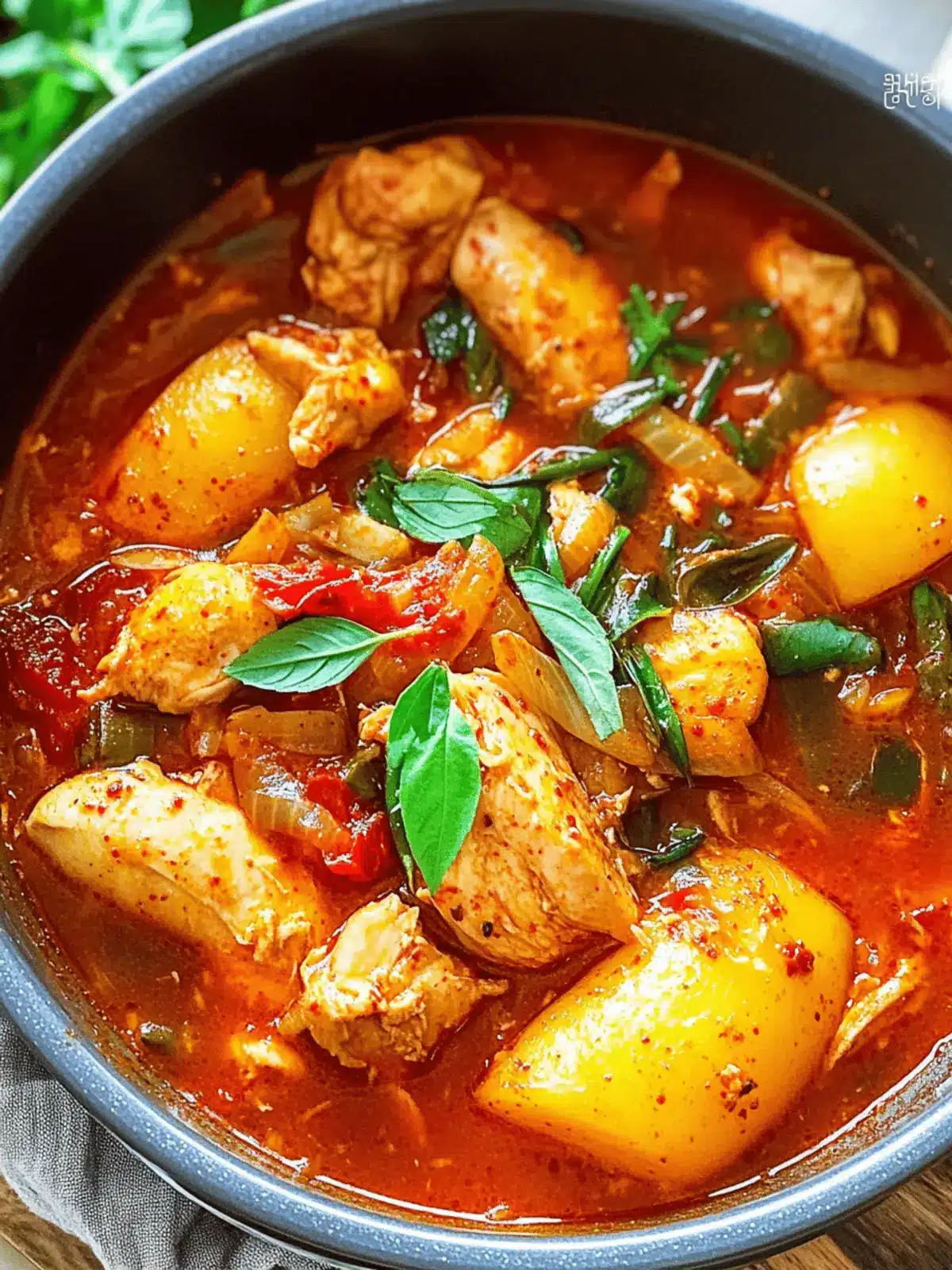
Easy Dakdoritang Recipe FAQs
What type of chicken should I use for Easy Dakdoritang?
For the best flavor and texture, I recommend using bone-in, skin-on chicken pieces. This helps to create a rich broth and tender meat. If you’re looking for a lighter alternative, boneless chicken breast can be used instead; just be aware that it may result in a slightly less flavorful stew.
How can I store Easy Dakdoritang leftovers?
Leftover Easy Dakdoritang can be stored in an airtight container in the refrigerator for up to 3-4 days. Ensure it’s cooled to room temperature before sealing. When you’re ready to enjoy it again, reheat on the stovetop over low heat, stirring occasionally until warmed through.
Can I freeze Easy Dakdoritang?
Absolutely! This hearty stew freezes beautifully. To do so, let it cool completely, then transfer it to airtight containers or freezer bags, leaving some space for expansion. It can be stored in the freezer for up to 3 months. Just remember to label with the date for your convenience!
What if my Easy Dakdoritang is too spicy?
If you find the stew to be spicier than you like, there are a couple of things you can do! First, add a bit more diced potatoes or carrots to help absorb the heat. Alternatively, you can mix in a dollop of cream or coconut milk to mellow out the spices. If you haven’t yet served, simply add a little honey or sugar to balance the heat.
Are there any dietary considerations for Easy Dakdoritang?
This recipe is quite versatile! If you’re accommodating gluten-free diets, substitute soy sauce with tamari. For a vegetarian option, swap chicken for tofu and use vegetable broth instead. Just be sure to be mindful of any allergies to soy in the gochujang or alternatives.
How do I know if my vegetables are done cooking?
To ensure your potatoes and carrots have the perfect texture in Easy Dakdoritang, check them with a fork; they should be tender but not mushy. This usually takes about 20 minutes of simmering. If you pierce them and the fork goes in easily but they still hold their shape, you’re good to go!
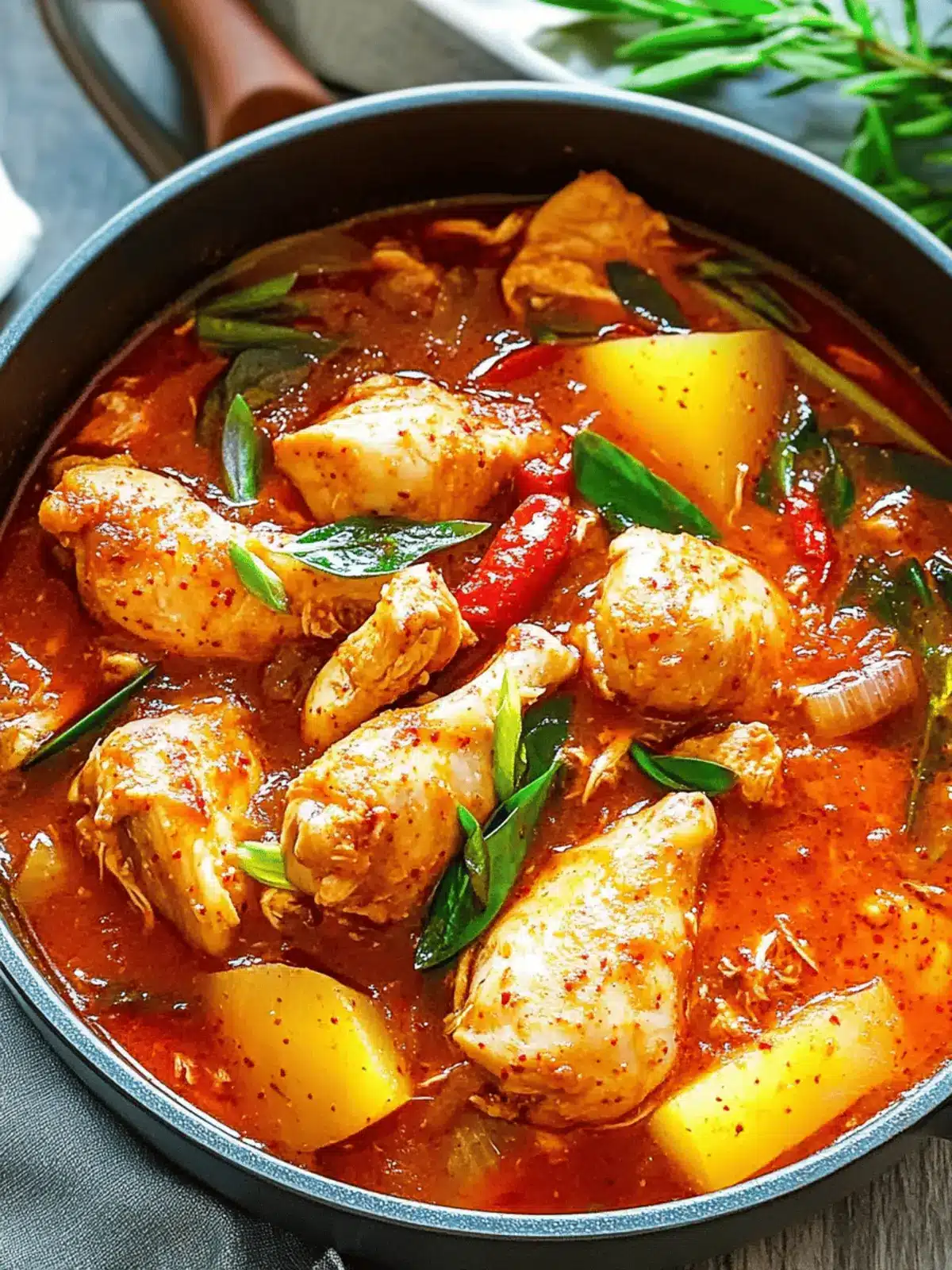
Cozy Up with Easy Dakdoritang: Spicy Korean Chicken Stew
Ingredients
Equipment
Method
- Prepare Sauce: In a mixing bowl, combine all sauce ingredients—soy sauce, gochugaru, gochujang, garlic, honey, and black pepper. Stir until well mixed.
- Sauté Chicken: Heat a large pot over medium heat, then add chicken pieces and onion. Toss with the sauce mixture, cooking for about 2 minutes to infuse flavors.
- Add Liquid: Pour in the water or anchovy stock, stirring well to combine. Cover the pot and let it cook for 10 minutes, stirring occasionally, until it begins to bubble.
- Add Vegetables: Stir in the potatoes and carrots, then reduce heat to low. Cover the pot again and let it simmer for 20 minutes, ensuring the potatoes are tender when pierced with a fork.
- Finish & Serve: Remove from heat and stir in chopped green onion and chili pepper for a fresh, vibrant finish. Serve hot over steamed rice.

